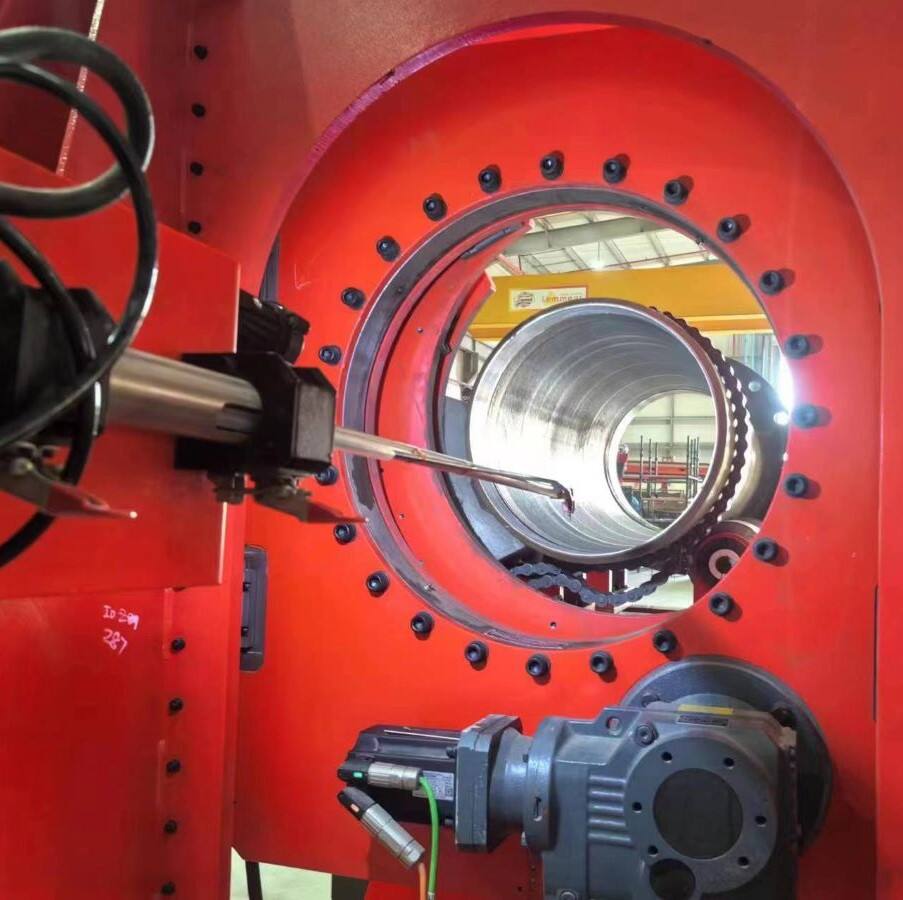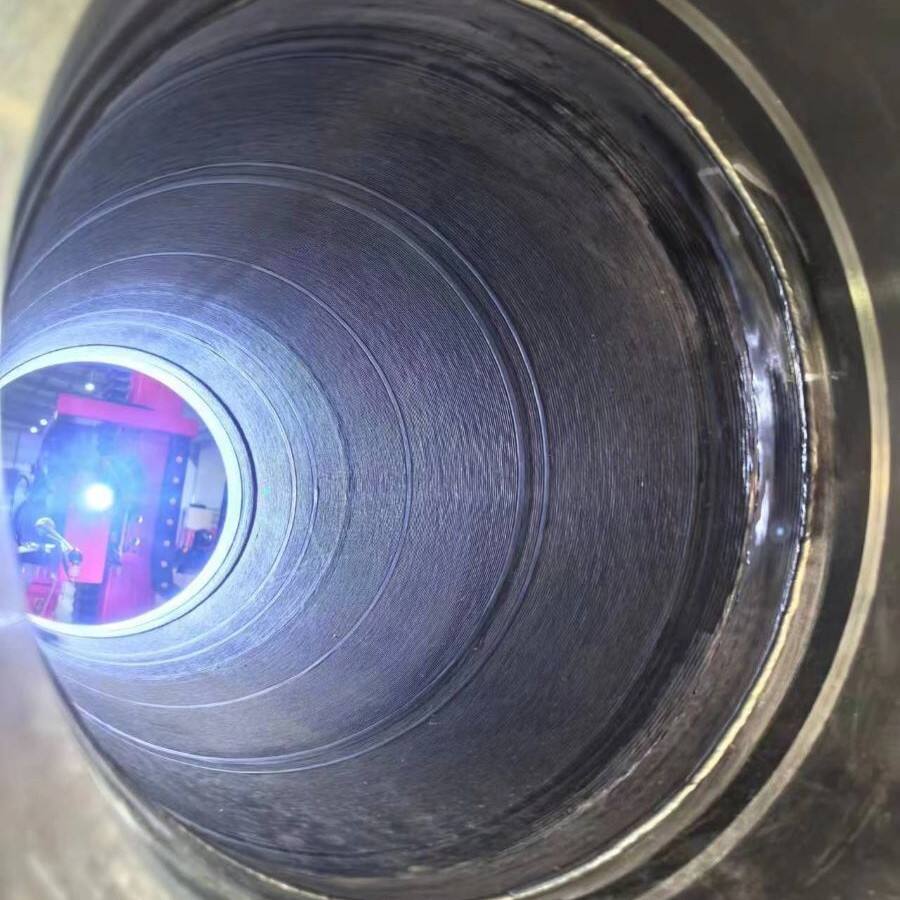Enhancing Industrial Durability with Advanced Pipe Cladding
Industrial infrastructure depends heavily on reliable equipment that can withstand high pressures, corrosion, and continuous operation. Pipes used in oil, gas, petrochemical, and power generation industries are particularly vulnerable to harsh environments. Without proper protection, these components can fail prematurely, leading to costly downtime and repairs. To address this challenge, companies increasingly turn to the pipe cladding station as a critical solution.
A pipe cladding station is designed to apply protective layers on the surface of pipes, creating resistance against corrosion, abrasion, and extreme temperatures. More than just extending service life, it enhances the overall safety and efficiency of the facility. By leveraging advanced welding and automation technologies, a modern pipe cladding station helps industries minimize operational risks while improving performance standards. The combination of durability, consistency, and reduced maintenance makes it indispensable in heavy-duty applications.
Core Design of a Pipe Cladding Station
Structural Framework and Build Quality
The structural foundation of a pipe cladding station determines its reliability. A well-engineered frame ensures stability during operation, minimizing vibration and deviations. This is especially important when dealing with large-diameter pipes or long continuous runs. High-quality materials used in the build contribute to the longevity of the station itself, ensuring consistent performance even in demanding environments.
Integration of Advanced Welding Systems
At the heart of every pipe cladding station is the welding system. Depending on the application, technologies such as GTAW, GMAW, or SAW can be integrated to achieve optimal results. Advanced welding heads ensure precise deposition of cladding material, minimizing defects and reducing the need for post-weld treatment. This integration allows the station to handle various alloys, from stainless steel to Inconel, ensuring protection tailored to different industrial needs.
Automation and Control Units
A modern pipe cladding station incorporates intelligent control systems that simplify operation and enhance repeatability. Automation minimizes operator error, while real-time monitoring ensures quality consistency. Through programmable interfaces, operators can adjust parameters such as speed, heat input, and deposition rates, enabling them to customize the cladding process for different project requirements.

Performance Benefits of a Pipe Cladding Station
Extended Asset Life
The primary function of a pipe cladding station is to prolong the lifespan of critical infrastructure. By applying corrosion-resistant layers, pipes become more resilient against chemicals, moisture, and abrasive particles. This not only reduces replacement costs but also minimizes unplanned shutdowns. Over time, industries see significant returns on investment due to reduced wear and tear.
Improved Safety Standards
Pipelines carrying hazardous materials demand the highest levels of safety. A pipe cladding station ensures weld overlay is applied consistently, reducing weak points that could lead to leaks or catastrophic failures. The reliability of cladding translates directly into safer operations, protecting workers and the environment alike.
Reduced Maintenance Costs
When pipes are protected with durable cladding, the frequency of maintenance drops significantly. A pipe cladding station helps reduce repair interventions, allowing operators to allocate resources more efficiently. In sectors where downtime costs thousands per hour, this efficiency becomes a competitive advantage.
Operational Flexibility of a Pipe Cladding Station
Compatibility with Different Pipe Sizes
Industrial projects often require cladding on pipes of varying diameters and lengths. A pipe cladding station is engineered to accommodate this diversity. Adjustable fixtures and modular designs enable seamless transitions between different pipe dimensions, ensuring operators can handle multiple projects without major setup changes.
Adaptation to Various Cladding Materials
Different industries require different protective layers. A pipe cladding station allows the use of multiple materials, from nickel-based alloys to stainless steel, depending on the environmental conditions. This flexibility ensures that the same station can serve applications across oil and gas, chemical processing, and marine industries.
Remote Monitoring and Data Logging
Advanced pipe cladding stations are equipped with remote monitoring capabilities. Data logging ensures that every weld overlay is recorded, which is vital for quality assurance and regulatory compliance. This feature also helps engineers analyze past operations and optimize future processes.
Technological Innovations in Pipe Cladding Stations
Robotic Automation Integration
The incorporation of robotics in a pipe cladding station has revolutionized efficiency. Robots provide unmatched consistency, eliminating human error while working at higher speeds. This allows large-scale projects to be completed faster without compromising weld integrity.
Adaptive Welding Parameters
Modern pipe cladding stations utilize sensors to automatically adjust welding parameters. These adaptive systems respond to variations in material thickness, surface condition, or environmental factors. Such innovation ensures uniform quality across all cladding projects, even in challenging conditions.
Enhanced Cooling and Heat Management
Welding involves significant heat generation, which can distort pipes if not managed correctly. Pipe cladding stations integrate advanced cooling systems that maintain optimal temperatures throughout the process. This not only preserves material properties but also contributes to flawless cladding deposition.
Applications of a Pipe Cladding Station
Oil and Gas Industry
Pipelines used in offshore and onshore projects face aggressive corrosion from seawater, chemicals, and hydrocarbons. A pipe cladding station provides the necessary protection to ensure these pipelines maintain integrity under extreme conditions, reducing the risk of environmental hazards and financial losses.
Power Generation Plants
High-pressure steam lines and heat exchangers in power plants require maximum durability. With a pipe cladding station, these components can be fortified to withstand thermal cycling and oxidation, extending their service life in energy-intensive environments.
Chemical and Petrochemical Facilities
In chemical plants, pipes are frequently exposed to highly corrosive substances. A pipe cladding station enables the application of specialized alloys that resist acid corrosion and chemical wear, making them essential for maintaining safe and uninterrupted operations.
Advantages for Industrial Operators
Consistency in Large-Scale Projects
One of the most significant advantages of a pipe cladding station is its ability to produce consistent results across extensive projects. Uniform cladding ensures that all pipes meet stringent industry standards, eliminating discrepancies that could cause operational inefficiencies.
Faster Project Turnaround
By automating the cladding process, a pipe cladding station accelerates project timelines. Faster turnaround means industries can bring new facilities online sooner, improving profitability while maintaining quality assurance.
Reduced Environmental Impact
Because cladding extends the lifespan of pipes, it reduces the need for frequent replacements and material consumption. This makes the pipe cladding station not only cost-effective but also environmentally responsible, supporting sustainability goals across industries.
Long-Term Value of Investing in a Pipe Cladding Station
Higher Return on Investment
Although acquiring a pipe cladding station involves upfront costs, the long-term benefits far outweigh the expense. Reduced maintenance, extended asset life, and fewer operational interruptions collectively deliver higher returns.
Strengthened Market Reputation
Companies that consistently deliver reliable, corrosion-resistant pipelines gain a reputation for quality. A pipe cladding station enables such consistency, making businesses more competitive in securing high-profile contracts.
Strategic Operational Efficiency
With improved safety, reduced costs, and extended service life, a pipe cladding station becomes more than just equipment—it becomes a strategic asset. For organizations seeking efficiency in every project phase, its role is irreplaceable.
FAQ
What is the primary function of a pipe cladding station?
It applies protective weld overlays to pipes, enhancing their resistance to corrosion, abrasion, and extreme temperatures while extending their service life.
Can a pipe cladding station handle different pipe materials?
Yes, it can work with various base materials and supports cladding using alloys like stainless steel and nickel-based composites, depending on industrial requirements.
How does a pipe cladding station improve project efficiency?
Through automation, adaptive controls, and consistent quality, it reduces rework, accelerates project completion, and minimizes downtime.
Is a pipe cladding station a cost-effective investment?
Absolutely. While initial costs may be high, the long-term savings in maintenance, extended asset life, and improved safety make it highly cost-effective.
Table of Contents
- Enhancing Industrial Durability with Advanced Pipe Cladding
- Core Design of a Pipe Cladding Station
- Performance Benefits of a Pipe Cladding Station
- Operational Flexibility of a Pipe Cladding Station
- Technological Innovations in Pipe Cladding Stations
- Applications of a Pipe Cladding Station
- Advantages for Industrial Operators
- Long-Term Value of Investing in a Pipe Cladding Station
- FAQ

 EN
EN
 AR
AR BG
BG HR
HR CS
CS DA
DA NL
NL FI
FI FR
FR DE
DE EL
EL HI
HI IT
IT JA
JA KO
KO NO
NO PL
PL PT
PT RO
RO RU
RU ES
ES SV
SV TL
TL IW
IW ID
ID LT
LT UK
UK SQ
SQ HU
HU TH
TH TR
TR FA
FA AF
AF CY
CY MK
MK LA
LA MN
MN KK
KK UZ
UZ KY
KY